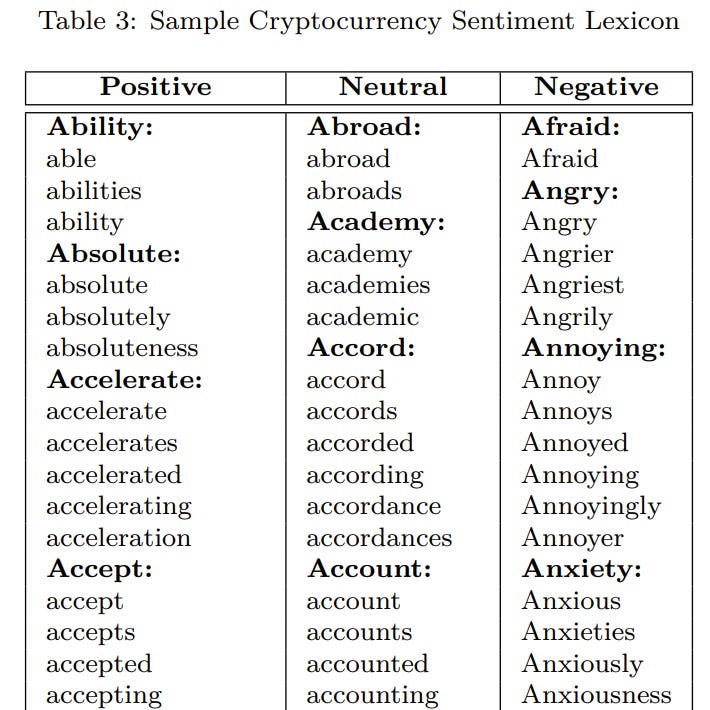Bitcoin Academics: How to Time the Market
The Only Way is DCA -- or is it?
It is a truth universally acknowledged that no-one can time the market. But I have a thesis I want to test: so today we’re into Bitcoin sentiment analysis.
In my opinion we’re a little past halfway through this current crypto bull market. The upturn began in Q3 2022, and post-Bitcoin Halving, we have around another 12-18 months of upside1 left as of May 2024. The Americans like to use baseball metaphors2, but as a proud Briton who finds their sports confusing, I’ll say instead we’re around stumps on the third day of a Test Match3 with the tourists prepping to bat their second innings.
Mr Market
In 1949’s The Intelligent Investor4, Warren Buffett’s mentor Benjamin Graham proposed a parable for modern stock markets by invoking the idea of a moody, emotional chap called ‘Mr Market’. He is subject to wild mood swings: at times cheerfully optimistic and at others desperately pessimistic.
You are free to take his opinion or disregard it, because he will always come back every day with another offer. From Graham’s allegory we get the idea that the market is a manic depressive. And this notion is supercharged in crypto.
A simple question
Would buying Bitcoin at times of persistent low market mood produce the best investment results?
The tools that we mortals have at our disposal pale in comparison to those at banks, investment firms and big budget financial institutions. I recall laughing out loud hearing the ubiquitous Bloomberg Terminal had a subscription fee upwards of $2,000 a month.
Still, with a little elbow grease, and an idea of what we’re looking for, we can close the gap. For this experiment we’ll be using the Bitcoin Fear and Greed Index.

Get sentimental
Crypto markets move more on momentum than fundamentals. I know this from personal experience (and my favourite former analyst Hanut, a dyed-in-the-wool Solana nut, knows this well, too). And as much as I continue to bang my head against the wall explaining that Ethereum is by far the most profitable blockchain, it doesn’t seem to have swayed many people5.
There is a substantial and growing body of academic evidence to suggest sentiment is far more critical in its effect on crypto prices than any other asset class.
Take for example this paper, published in February 2024: From Whales to Waves: The Role of Social Media Sentiment in Shaping Cryptocurrency Markets (free PDF download from SSRN).
It used a team of eight people scraping data from 14 million Reddit posts6 and 55 million tweets from Twitter/X, labelling each post with a positive or negative sentiment score (think happy face or sad face).
It also compares those human-powered labels with a separate set of training data using ChatGPT7.
The authors include Professor Andrew Urquhart, a specialist in high-frequency trading; Professor Brian Lucey, the editor-in-chief of the International Review of Economics and Finance; and Suwan (Cheng) Long, a doctoral researcher at Cambridge Judge Business School, which produces one of the internet’s best free resources of live Bitcoin and Ethereum data.
It’s an academic paper, so it’s not a rip-roaring page-turner. But while most people’s brains will turn off and go into Sleep Mode when they encounter sentences like — “we employ advanced techniques like time-variant Granger causality and asymmetric time-varying parameter vector autoregression (TVP-VAR) frequency connectivity” — the fact is that these guys (two male guys, one female guy8) are some of the leading lights in the academic study of cryptocurrencies.
So it’s worth hanging in there for the conclusion, even if you don’t grasp the hard maths bits. The paper concludes that:
Whales — large holders of BTC or ETH — have an outsize effect on volatility
Market sentiment consistently affects both long and short-term cryptocurrency volatility
Understanding investor sentiment is highly important for navigating the cryptocurrency market
Our experiment
The first point, on the behaviour of whales, is not really relevant here. For this experiment, we don’t really care why something is happening, only that it is. However, the other two points, on market sentiment and volatility, are very important.
Is Dollar-Cost Averaging — DCA — the best way to smooth out volatility?9
Or can trend-following using sentiment analysis be a more profitable long-term strategy?
Normal people don’t usually have the time to model performance (nor have access to machine learning computing power (nor Bloomberg Terminals)). But we can always fall back on free resources and our own ingenuity.
This piece explains in detail the inputs used to calculate the Bitcoin Fear and Greed Index, but just for a quick recap it uses:
The volatility of the Bitcoin price — how much it swings around its average
Bitcoin trading volume — how much people are buying and selling
Social media sentiment — “To The Moon” or “Crypto is Dead”?
Bitcoin’s dominance — as a proportion of the total crypto market cap
If you wanted to reproduce this experiment to find the results yourself, you could:
Take the entire history of the Bitcoin Fear and Greed Index (BFGI), going back to 201810.
Use an ARRAYFORMULA11 to identify periods when the BFGI returns results of Extreme Fear (<25 score) or Extreme Greed (>75 score)
Set your own reasonable conditions for buy or sell points
The conditions
There’s no point building a model that is only backwards looking and hence people can’t actually use. So in order to set a specific buy-in point, I chose the third day after two consecutive days of Extreme Fear (<25) readings on the BFGI. I’m calling it the Three-Day Buy model.
I have compared the results against the standard recommendation of a DCA model (Dollar Cost Averaging by buying Bitcoin only on the first day of every month).
The results
Three-Day Buy model
Using my model, the average Bitcoin buy price is $18,146. The most recent would be 27 November 2022, at $16,534.
DCA model
Using DCA, the average Bitcoin buy price is $24,103. The most recent would be 1 May 2024, at $58,298.
The issues
The persistent issues we run into with the Three-Day Buy model vs DCA are:
Having to have cash available at an unknown time. Any market timing strategy suggests we have infinite capital available at all times, and we know with perfect foresight when unforseen expenses will eat up potential investing capital, for example when our boiler will break down, or when mortgage rates or rent will suddenly spike.
We don’t know in advance how many repeat purchases there are going to be in a single month or year — so it’s impossible to know position sizing (how much money you lay out for each buy).
Not knowing the exact composition of the inputs for the BFGI. What weighting is given to Bitcoin volatility, and what to a Google Trends score? We only know the number at the end of each day. There are attempts underway to use machine-learning to predict the BFGI, but there are problems12.
Having to watch the indicator like a hawk. We know from experience that the more exposure one has to a particular asset or market, the more likely one is to buy it. This comes from a combination of having Google/Youtube/Twitter algorithms following our every online move and suggesting a neverending slew of content that fits our search profile.
Models work until they don’t: even the best ones break. Consider the trader Plan B’s once universally-praised (now much derided) Bitcoin price predictor Stock-to-Flow.
Surprising outcomes
There is only a $141 difference between the lowest buy price for my Three-Day Buy model and the DCA model, which was a bit of a shock.
A $5,867 difference in the average buy price for Three-Day Buy vs DCA is far less significant than I originally suspected, especially considering the average BFGI is way higher (76 vs 19).
There are far fewer buying days for DCA than for Three-Day Buy: which means you would pay much higher fees using Three-Day Buy13.
The conclusion
For this experiment, the conclusion must be that DCA is the optimal choice for the average Bitcoin investor.
I’d like to conduct more research in this area looking at
A long/short strategy (both buying at times of Extreme Fear and selling at point of Extreme Greed).
Using a Seven-Day Buy model.
Extending the acceptable buy points from Extreme Fear (<25 BFGI score) to both Fear and Neutral (<50).
Thanks for reading. Have a great weekend.
This is not financial advice. This is a fun experiment just to see what would happen. Don’t buy crypto unless you want to be shunned at family gatherings, and be prepared to lose it all.
This is just an educated guess based on previous market cycles. Please don’t use it to trade.
US venture funds and private equity folks I respect, like Meb Faber and Starkiller Capital, tend to say things like “we’re somewhere in the fourth or fifth inning” of this crypto cycle.
And let’s just take a moment to applaud the outgoing England fast bowler Jimmy ‘The Burnley Express’ Anderson. Thanks for 700 wickets, big man.
Probably the first book every would-be investor should read.
Disclaimer: It is in my direct economic interest if other people also buy ETH. It’s about 25% of my total portfolio.
Using the subreddits r/btc, r/Bitcoin, r/eth, r/cryptocurrency and r/cryptomarkets.
And that ChatGPT is just as good at labelling as humans doing the same time-intensive, brain-mangling work.
I know you guys know I’m not being gender-ist when I say ‘guys’, but we live in a weird world.
There is one other massive benefit of DCA that is rarely talked about. You get to spend the vast majority of your time not thinking about markets and prices. This is a blessing and a mercy.
As with most of my research I have hand-scraped the data over many years. No, I still haven’t learned how to use an API.
It took me an embarrassingly long time to learn all the cool timesaving functions of Google Sheets (or Excel, for those locked in a frustrating Microsoft software deathloop).
If we could guess what the BFGI might be on any given day or week in the future, then we could use something a bit more sophisticated than a Three-Day Buy model. A recent formal paper by computer scientist Qichuan Huang found the machine learning model Grid Search XGBoost Regression is the most powerful predictor of BFGI values, but they admit overfitting — where a model gives accurate predictions for known training data but is way off with unknown future data — is a persistent problem.
Pesky real-world things like fees are rarely counted or considered in academic literature but make a massive difference to actual performance versus lab-tested performance.






A very interesting read as ever. As cryptocurrencies have no backing (like central bank support etc.) they are,I assume bound to be more dependent on "sentiment" than other forms. Trying to track and predict this is, as someone said, like trying to drive while looking at the rear view mirror. As you say this may work for a time....